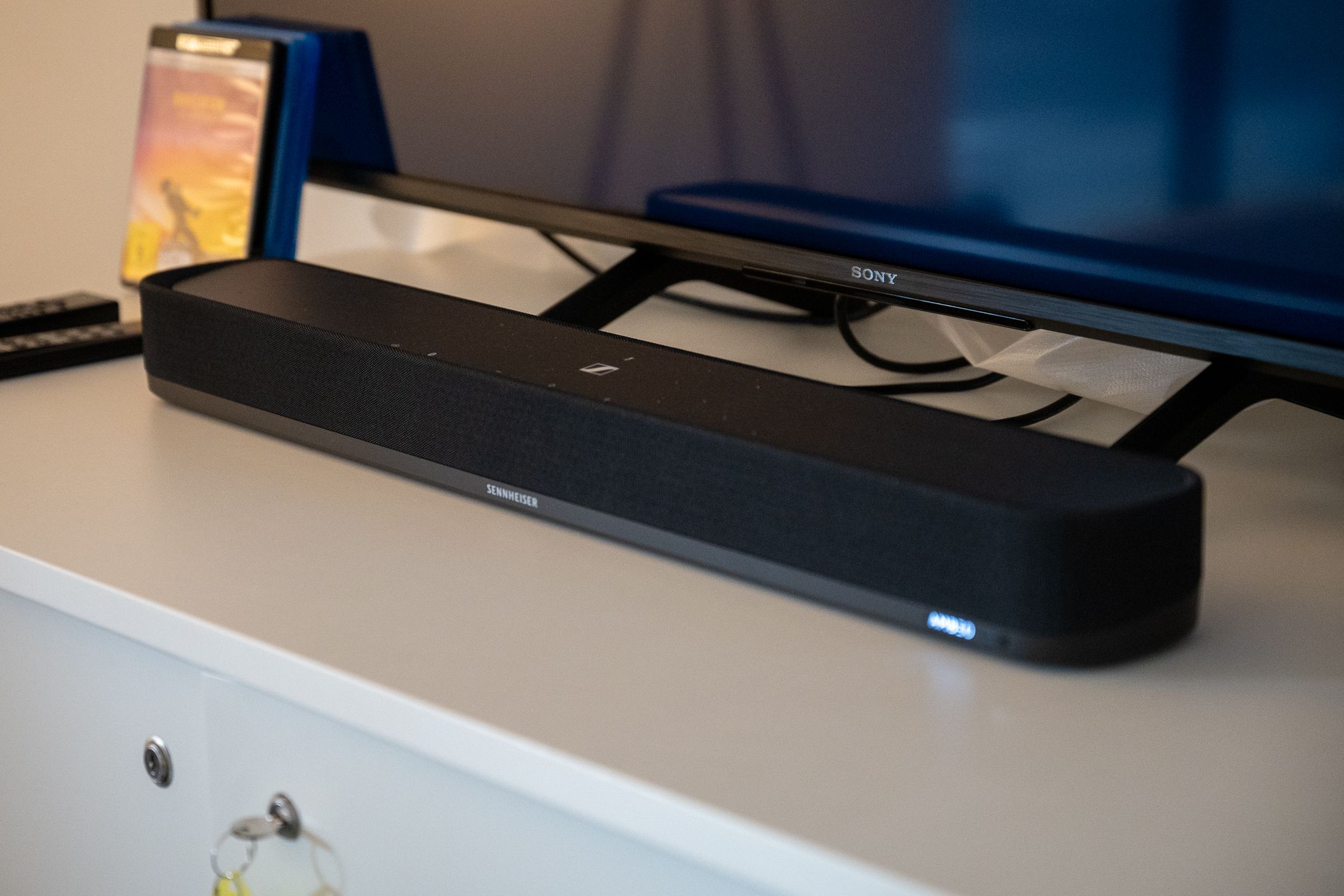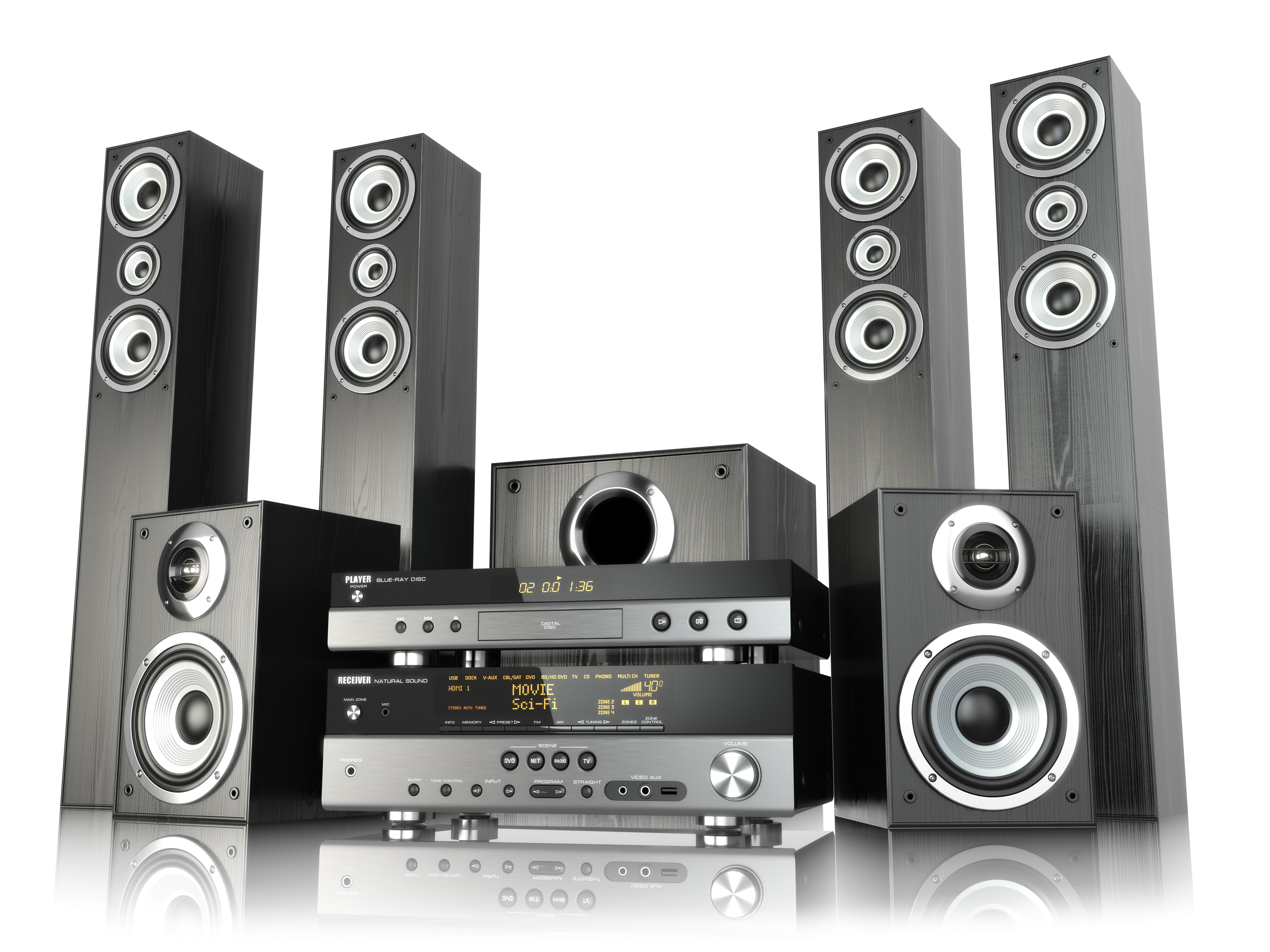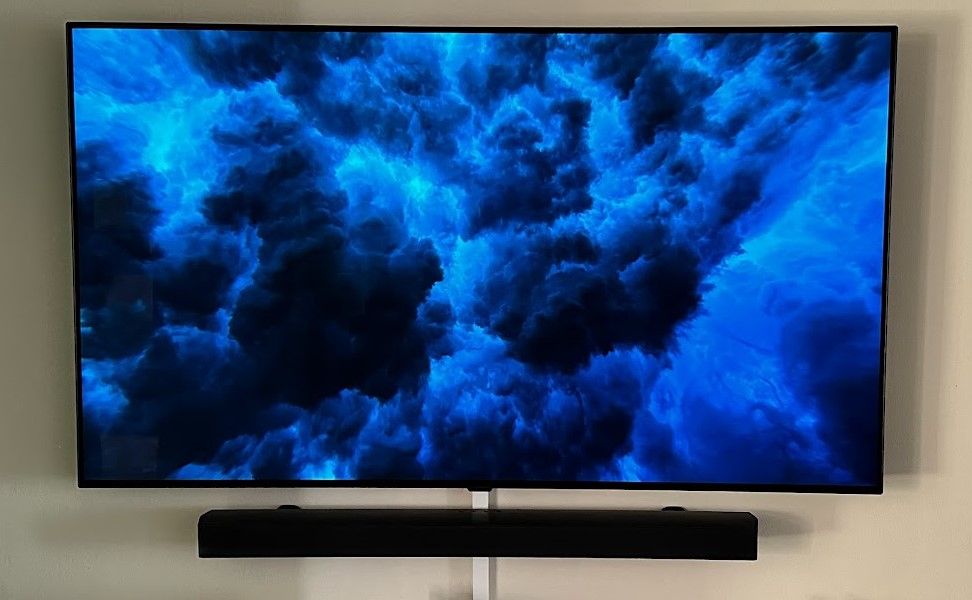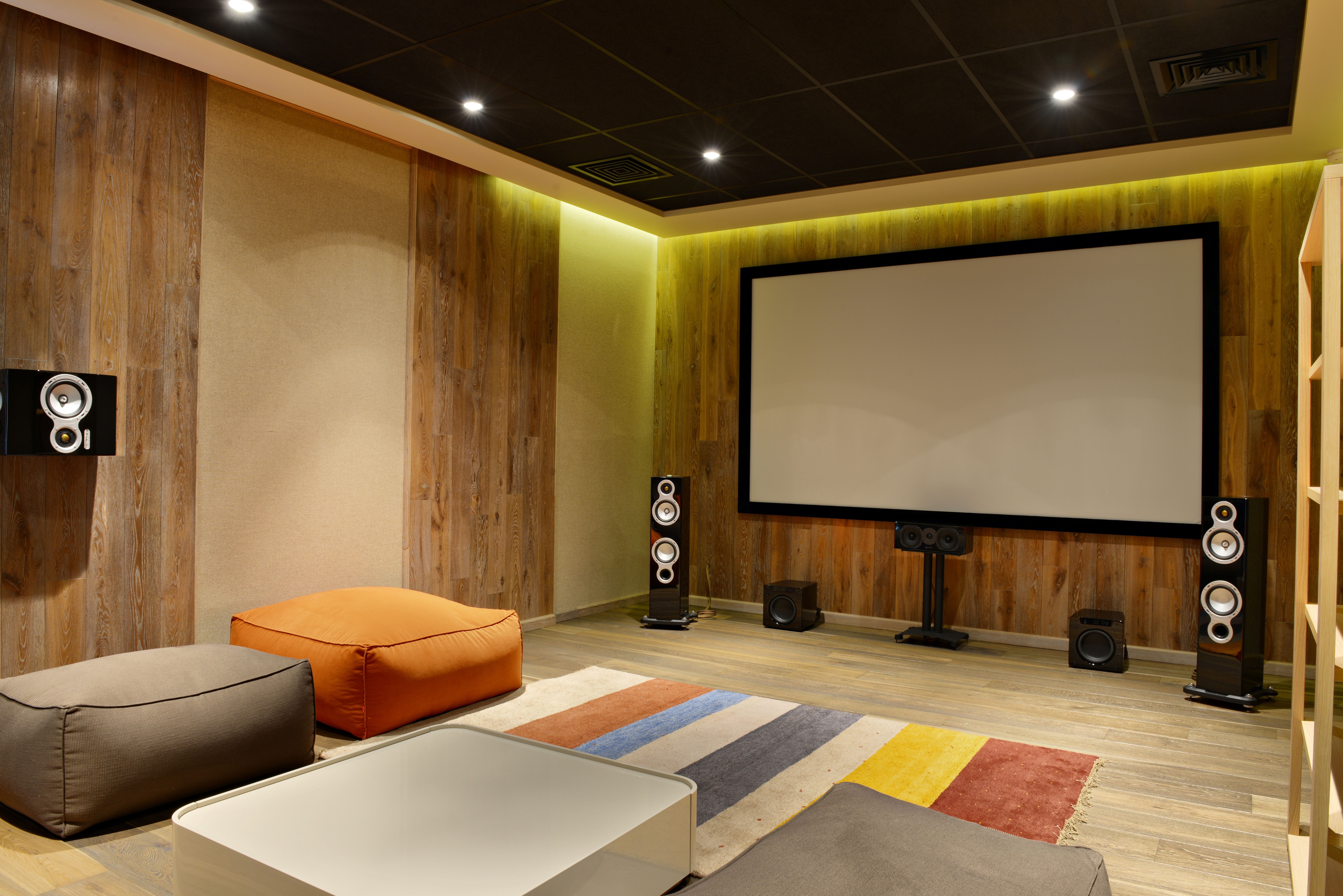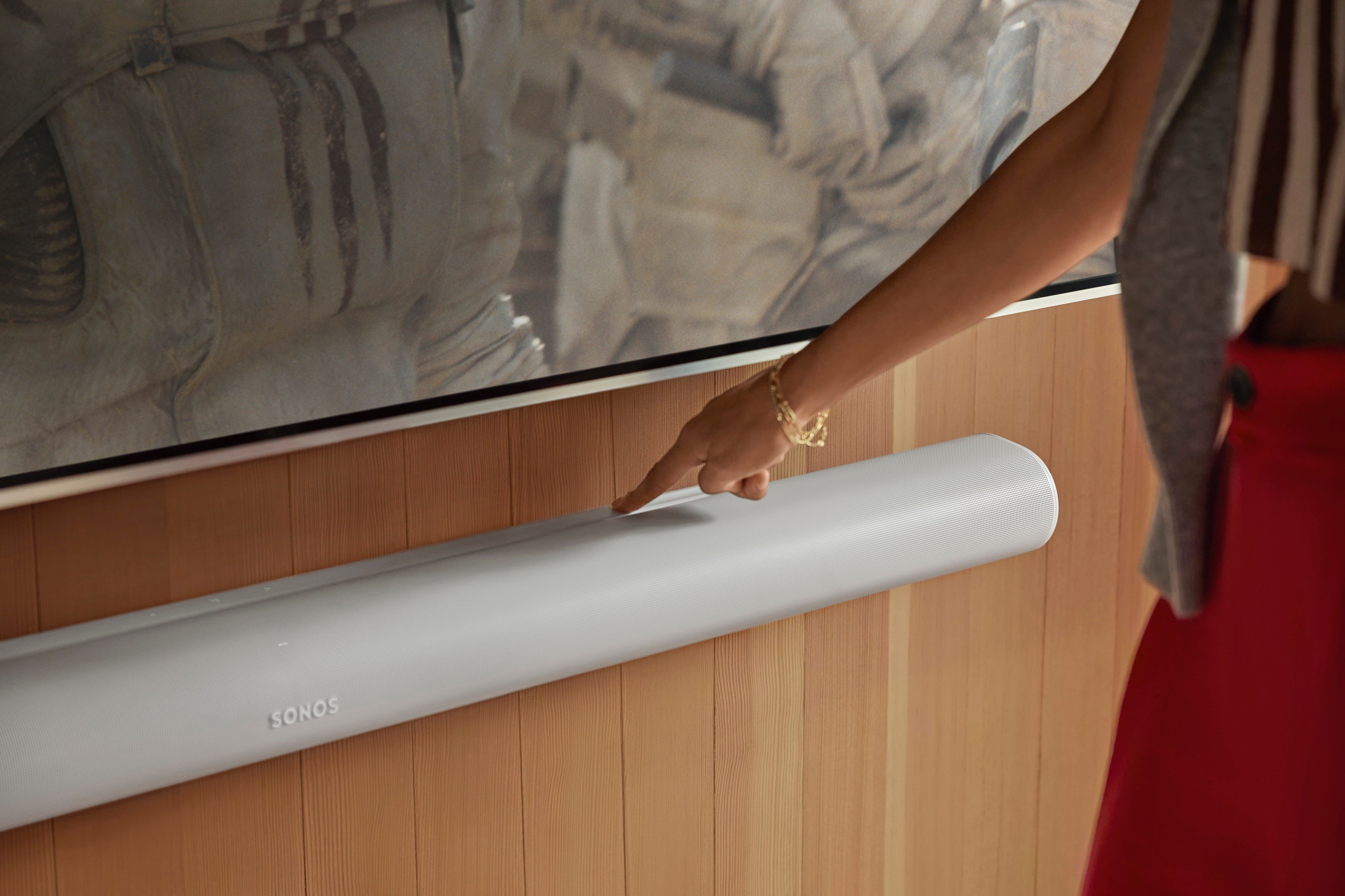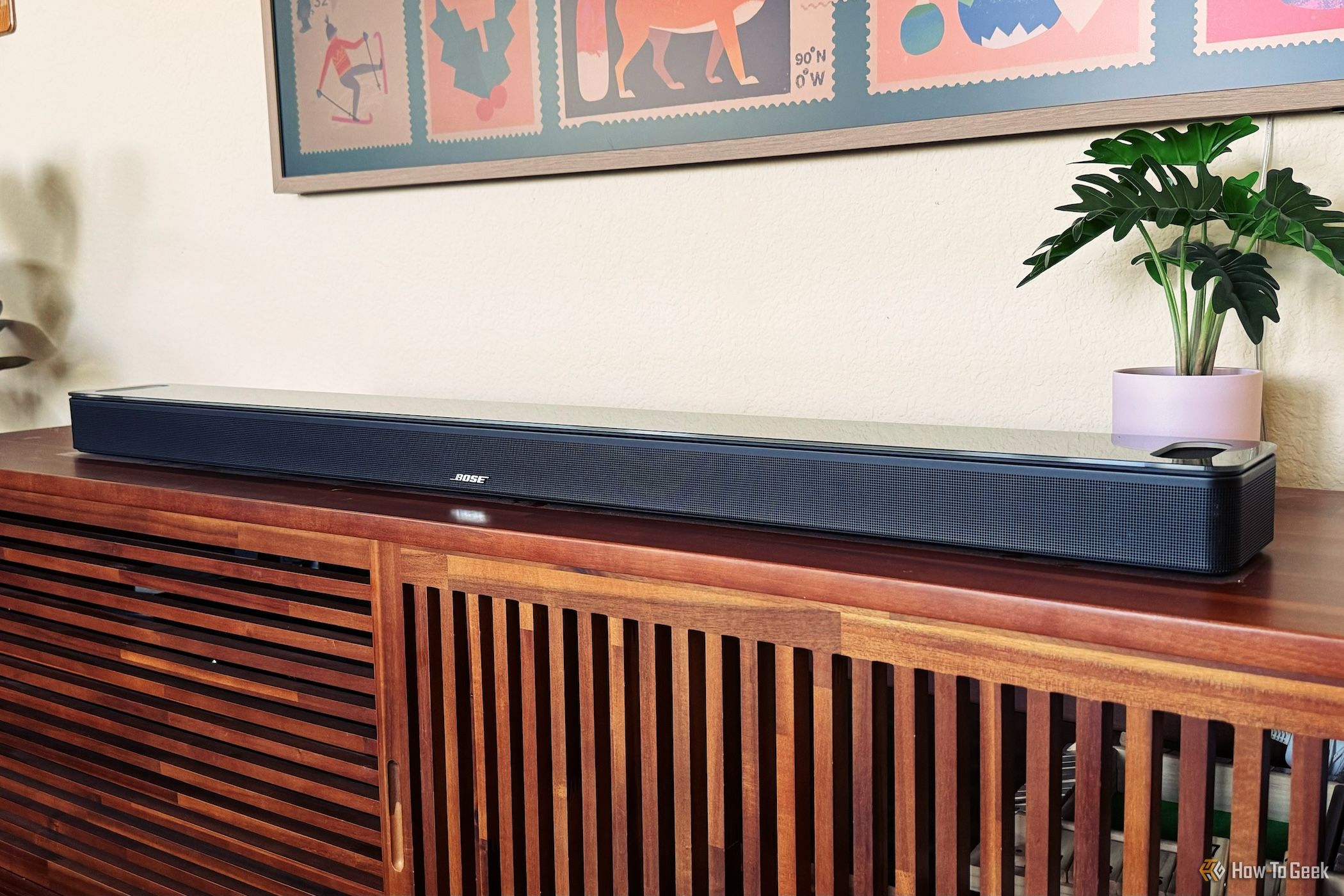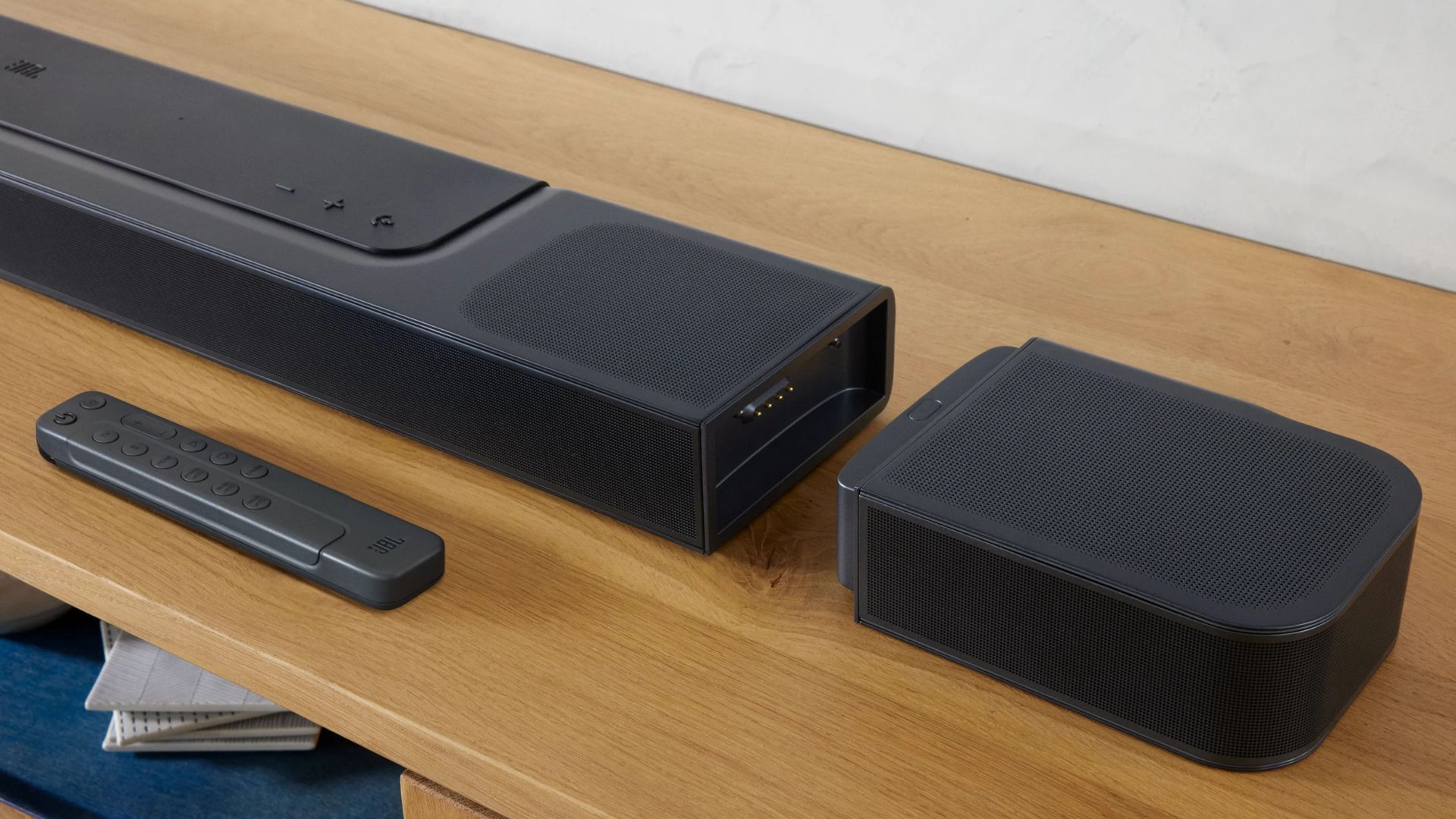If you enjoy a great sound system, the debate between soundbars and surround sound systems is a popular topic in home entertainment. If you’re wondering which one is best for your home theater, we hope to help you decide.
What Is the Difference Between a Soundbar and a Surround Sound System?
A soundbar is a slim, all-in-one speaker that can sit right under your TV or be mounted to the wall. It is designed to simplify your audio setup while still delivering a significant upgrade over your TV’s built-in speakers. Many soundbars even come with a wireless subwoofer to add some oomph to the bass.
Surround sound systems, on the other hand, consist of multiple speakers strategically placed around your room to create a fully immersive, 360-degree soundscape. Typically, a 5.1 system (five speakers and a subwoofer) is enough for most people. But, if you’re a true audiophile, you might want to go all out with a 7.1 or even a 9.1 setup, which adds even more speakers for a richer experience.
How Do Sound Quality and Performance Compare Between the Two?
If you’re upgrading from your TV’s built-in speakers, a good soundbar can feel like you’ve just taken the cotton out of your ears. Dialogue becomes clearer, explosions hit harder, and you’ll start noticing background details you didn’t even know were there.
Some higher-end models even come with separate subwoofers for deeper bass or rear speaker kits to mimic surround sound. But at the end of the day, soundbars are still a compromise. Because they’re compact and designed to fit under your TV, they can’t physically reproduce the same depth and dimension as a true surround sound system.
Now, surround sound systems are a whole different beast. With multiple speakers positioned around your room, these systems create an audio experience that makes you feel like you’re sitting in the middle of the action. If you are watching a movie like Jurassic Park, you’ll feel the T. rex stomping behind you before it roars from the front. Or, if you’re playing an intense video game, you’ll hear the footsteps of your enemy creeping up from the side. It’s the kind of experience that makes your favorite shows and movies feel alive.
Which Setup Is Easier to Install and Maintain?
Honestly, installing a soundbar is as straightforward as it gets. You unbox it, plug it into the wall, connect it to your TV (usually via HDMI ARC or optical cable), and you’re done. They’re designed for simplicity and convenience, and they deliver exactly that. Maintenance is practically non-existent. Dust it off occasionally, and you’re good to go.
For surround sound, I won’t sugarcoat it—setting up a surround sound system is work. You’ve got multiple speakers that all need to be strategically placed around your room for that immersive, theater-like experience. Depending on the setup, this could mean mounting speakers on walls, running cables under rugs or along baseboards, and connecting everything to a receiver.
Wireless surround sound systems do exist, and they’re definitely more manageable, but even then, you’re still dealing with syncing multiple components and finding power outlets for each speaker. Plus, getting the sound balanced just right can take some trial and error.
Maintenance is another story. Over time, you might need to recalibrate your system as furniture gets moved or your room layout changes. And if one speaker decides to act up, troubleshooting can be really stressful. That said, if you crave the most immersive experience, the effort is worth it.
What Are the Space and Aesthetic Considerations for Each Option?
Personally, I think soundbars are perfect for people who want a clean, modern vibe in their living room without sacrificing sound quality. You can throw one into a small apartment or dorm room, and it’ll blend right in without taking over the space. Plus, there’s no intimidating setup process—just plug it into your TV, and you’re good to go.
For surround sound setups, first, there’s the physical space to consider. A 5.1 setup (the most common configuration, as I mentioned earlier) includes five speakers—front left, front right, center, and two rear speakers—plus a subwoofer. A 7.1 setup adds two more rear speakers, and things can get even crazier from there. If you have a large living room or a dedicated media room, this might not be a big deal, but in a smaller space, it can quickly start to feel crowded. You’ll also need to think about where all those speakers will go and how you’re going to hide the wires. And even with wireless systems, you’d need some creativity to keep things looking tidy.
Surround sound systems also aren’t exactly subtle. Unless you invest in in-wall or in-ceiling speakers (which can be a pricey and time-consuming installation), you’re going to have visible equipment in your room.
Are There Hybrid Options That Combine the Best of Both Worlds?
Soundbars have significantly improved in recent years, with many high-performance models now supporting immersive surround sound formats like Dolby Atmos and DTS:X. These formats add overhead and height effects, bringing the sound closer to the enveloping, dynamic experience of a traditional surround sound system.
Take the Sonos Arc Ultra, for example, which offers a 9.1.4 spatial audio experience. This powerful soundbar features seven angled dome tweeters, including two up-firing ones for height effects, creating a wide and precise soundstage. It delivers impressive bass even without a subwoofer. However, you can still elevate the experience by pairing it with Sonos Era 300 speakers for rear satellites and a Sonos Sub 4 for deep, theater-like rumble.
Another great option is the Bose Smart Ultra Soundbar, which you could optionally pair with a pair of Surround Speakers 700 and Bass Module 700 to deliver rich, detailed surround sound with impressive clarity and strong bass. It’s perfect for creating a big, room-filling sound.
If you are looking for a more comprehensive surround sound experience, you should consider the JBL Bar 1300X. It supports Dolby Atmos and comes with wireless detachable speakers that charge and attach to the sides of the soundbar and a 12-inch subwoofer. These detachable units can also double as portable Bluetooth speakers, giving you flexibility and convenience.
These hybrid soundbars are ideal if you want a high-quality audio experience without the complexity or cost of a full surround sound system.


